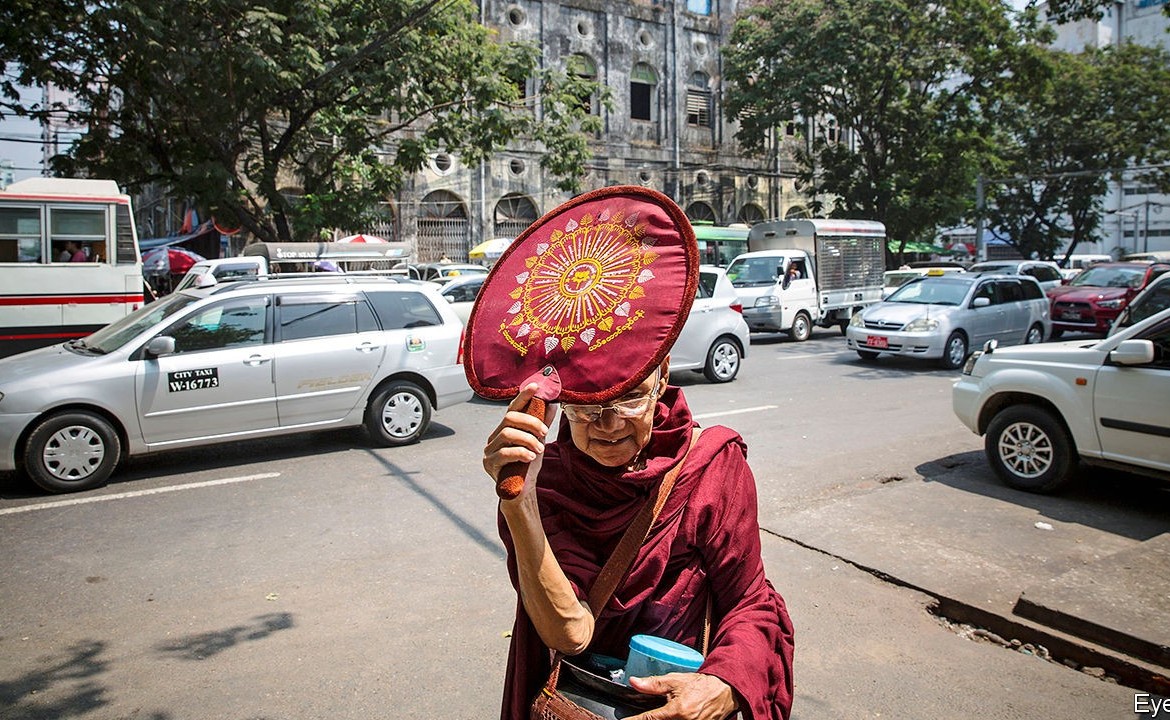


Yangon has more of them than any other city in South-East Asia
SINCE MYANMAR began to reverse decades of isolationism in 2011, it has embraced modernity with a zeal befitting a country deprived of it for so long. Students tap smartphones, food-delivery jockeys zip down the streets and cash machines are everywhere. But while the people of Yangon, the country’s biggest city and commercial capital, are rushing into the present, much of the urban fabric remains firmly in the past. Most buildings in the city centre were built in the colonial era, when Rangoon, as the city was then known, was the biggest commercial hub of the British empire between Singapore and Calcutta (as it was). Indian merchants, Armenian hoteliers, Filipino barbers and Saudi tobacco-dealers set up shop or took up residence in stately Victorian, Edwardian and Art Deco buildings.
Myanmar’s subsequent economic stagnation left Yangon with more colonial buildings than any other city in South-East Asia. But the grand edifices were neglected during the long years of military rule, and most are now streaked with mould. Red signs affixed to rotting doors mark many out as unfit for habitation. They are not beyond repair: a stone’s throw from the shimmering Sule Pagoda in the centre of the city stands the Tourist Burma building, a former office and department store spattered with pediments and pilasters. Once derelict, it was renovated by Burmese and British ngos and reopened as a community centre in 2019.
Doh Eain is always keen to hear from companies, NGOs or individuals wanting to join, collaborate or contribute, either with funds, materials, skills and/or time. Contact us if you’re interested to explore opportunities.